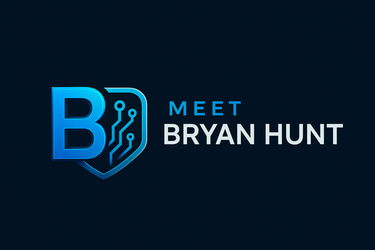Manage Long MSSP Sales Cycles Like an Enterprise Pro
Winning Complex MSSP Deals: The Reverse-Engineered Sales Cycle Calendar
Bryan Hunt
8/4/20253 min read


Last week, I interviewed with a Chief Revenue Officer who mentioned something that caught me completely off guard: He said his other candidate said it would take four to six months to build a sales pipeline. When I confidently shared that mine would be up and running in just 30 days, he seemed genuinely surprised. Frankly, I was stunned that anyone would be willing to concede nearly half of 2025 without even trying to accelerate their pipeline growth.
The truth is, building a strong sales pipeline fast isn't magic—it's about disciplined, strategic management of the entire sales cycle. This week I'm off to prospect the coffee stations at Black Hat in Las Vegas, and it's an hour and a half's drive from my home office. So let's say I find a prospect. As I mentioned in my last blog about front-end qualifying, the secret to my consistently high close rate on complex Managed Security Services Provider (MSSP) deals starts at the very beginning, by identifying at least two high-value needs rated seven or higher on my Pain Index. But that's just the start.
Here's exactly how top sales pros ensure a December 30th go-live date becomes reality:
Step 1: Front-End Qualification (Immediately)
Begin with a deep qualification to pinpoint at least two critical, high-pain areas the client must improve. These anchor points frame every future interaction.
Clearly identify and confirm two "must-improve" needs.
Explicitly document these pain points with the prospect.
Put together a calendar of service with the prospect at this meeting, showing the timeline with meetings and checks for "Go - No Go" follow-ups to gauge urgency and avoid deal stalls.
Step 2: SME Discovery Meetings (August – September)
Schedule focused sessions with Subject Matter Experts (SMEs) to validate technical feasibility and establish credibility:
Week of August 15: SME Session #1 – Technical Overview with "Go-No Go" Check
Week of August 29: SME Session #2 – Compliance and Risk Management
Week of September 12: SME Session #3 – Integration and Implementation Roadmap "Go- No Go."
Step 3: Tailored Demos (October)
Position targeted demos showcasing solutions directly addressing your prospect's identified pain points:
Week of October 3: Demo #1 – Security Operations and Incident Response
Week of October 17: Demo #2 – Real-Time Monitoring and Threat Intelligence
Step 4: Proposal Preparation and Submission (November)
Refine your value proposition, clearly linking it to identified pain points:
Week of November 1: Internal proposal review and refinement
Week of November 7: Formal proposal meeting with stakeholders
Immediately set up the "Funding Meeting" To address ROI and Pricing issues and avoid stalls.
Step 5: Funding and ROI Confirmation Meeting (November 9)
Within two days of the proposal meeting, hold a dedicated funding session addressing:
ROI justification
Budget clarification
Answering remaining pricing or value concerns
Possibly use the "Nice top haves - 6 and under pain scale issues" as value adds.
Step 6: Contract Signing (Mid-November) 2025 Business
Target November 15—approximately six weeks before go-live—for contract completion:
Final legal and compliance review
Contract execution confirmed
Step 7: Go-Live Preparation and Client Onboarding (December)
Begin onboarding processes immediately following contract signing:
Week of December 1: Kick-off call and initial client training
Week of December 15: Pre-launch checklist and dry runs
Final week of December: Confirm readiness and align expectations
Step 8: Go-Live Date (December 30)
Execute a seamless launch, ensuring client confidence and clear evidence of delivered value from Day One.
By strategically mapping your MSSP sales cycle backward from the client's ideal go-live date, you proactively manage each step, minimize uncertainty, and dramatically increase your odds of success.
This approach also eliminates the Competitor Enterprise Rep who decides to follow up later while I build rapport and value with the prospect. Usually, when the competition follows up after I have had several more meetings, the prospect doesn't feel like starting the process over, so they get ghosted, and I get the close. Long-cycle deals don’t have to be guesswork—structured planning makes predictable success possible.
I'm currently exploring new sales opportunities—if you're looking to ramp up quickly and ensure your 2025 pipeline is built to deliver results fast, I'd love to connect. Visit my website at www.meetbryanhunt.com to learn more.
Connect on LinkedIn
Partnering for impactful sales solutions and growth.
Contact me
(435) 429-1164
© 2025. All rights reserved.
